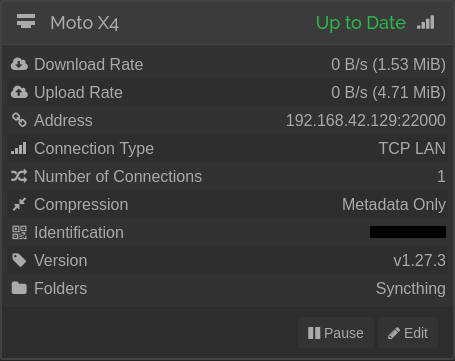I would like to see the ability to easily switch between listening address in Syncthing Web UI and android app. I explain below the background to this feature request, but to give an idea of what I mean, I would like something like
- auto discovery of available addresses to listen to (if the device is connected to a router and a tethering network, it displays two available listening addresses like “192.168.1.4”, with default port 22000)
- a dropdown list in the Web UI directly on the home page where I can choose the listening address.
- the same kind of feature on the Android app.
I would like to know your opinion on this feature, whether you find it as important as I do, and try to understand how this could be implemented.
I love syncthing and hope we can make it even better! <3
Background
I noticed several topics 1 (which I created) 2 3 4 concerning the same issue: how to sync two devices (smartphone and PC) in tethering over Wifi or USB.
The ideal scenario would be to be able to sync without the need of an internet connection, but from what I understand, syncthing with tethering requires one device at least to be connected to a router.
That said, using the smartphone data network as internet connection is fine in most case, that is as long as I am in a location within connectivity range.
So to solve this issue, people recommend to do this.
- Connect smartphone to data network.
- Connect smartphone with PC via USB tethering or Wifi tethering
- Get for the PC’s assigned local IP on the tethering network using “ip a” command for example.
- Get the smartphone’s local IP on tethering via an app like “IP tools: wifi analyzer”
- Fill these information in the syncthing web ui on PC and the app on the smartphone, into the listening address field.
- Restart syncthing on PC
This is a tedious process, but the ability to sync over a simple USB cable or direct Wifi tethering between PC and smartphone is I think an awesome feat.
So I would like to be able to do this directly in Syncthing UI in a convenient way.
